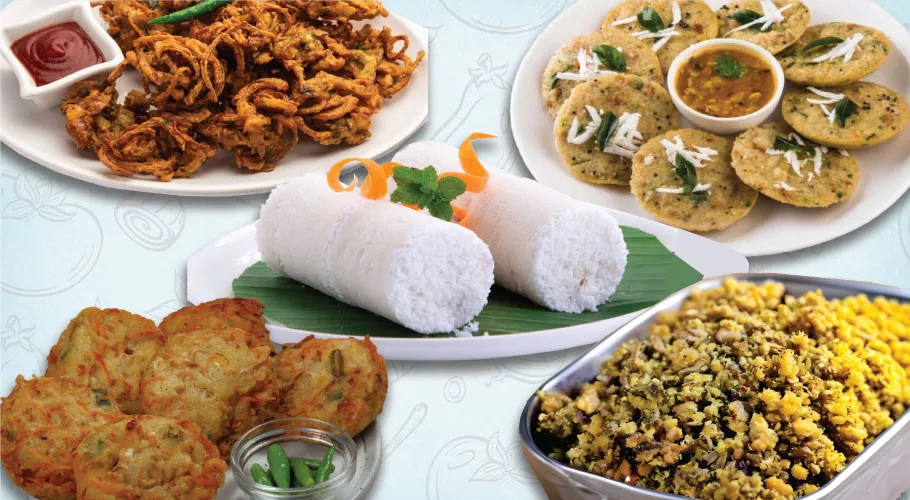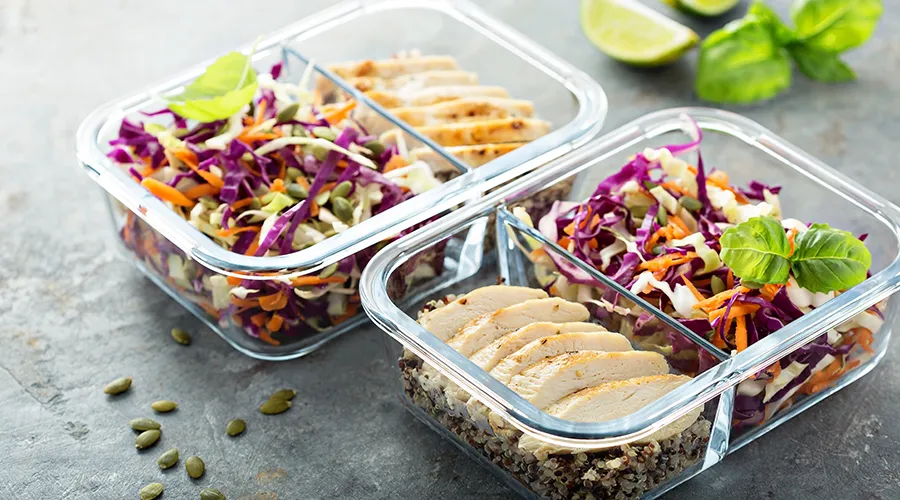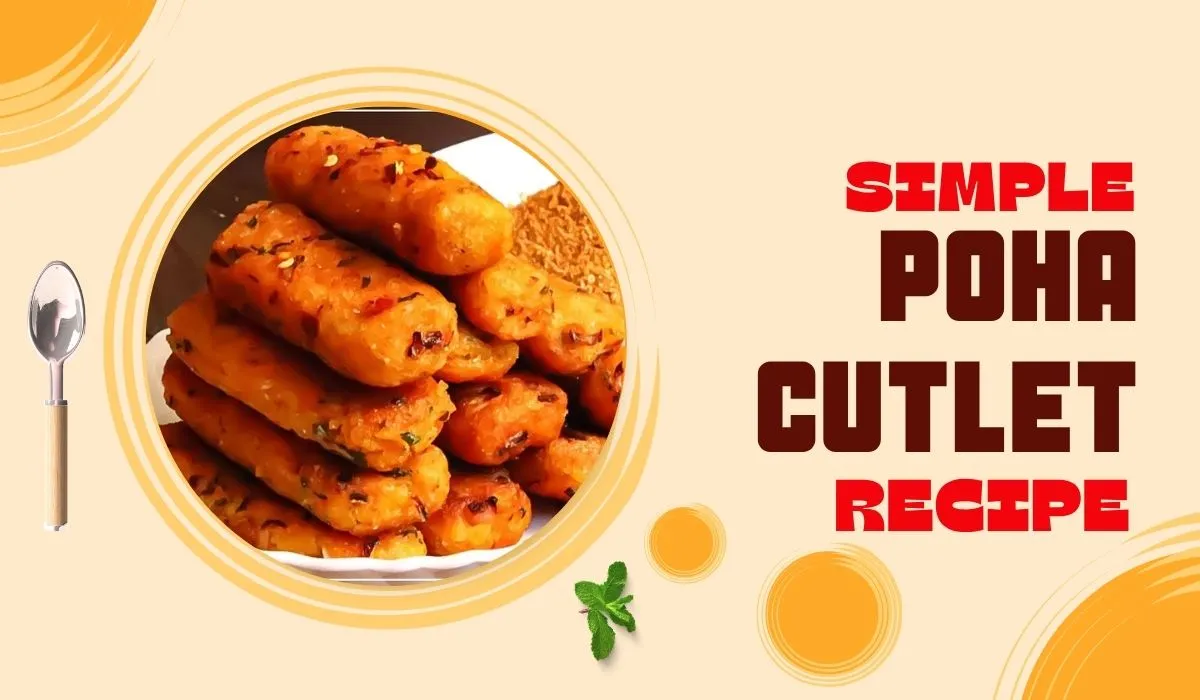Living with diabetes doesn't mean giving up the flavors and comfort of Indian cuisine. As someone who has helped many diabetes patients with their meal planning, I've discovered countless ways to enjoy delicious Indian food while keeping blood sugar levels stable. In this guide, I'll share practical tips, recipe ideas, and expert advice on enjoying healthy Indian food options for diabetics without compromising on taste or tradition.
Discovering Healthy Indian Food Options for Diabetics
Indian cuisine offers a wealth of diabetes-friendly ingredients that can be part of a balanced meal plan. The key is knowing which traditional foods work best and how to prepare them in healthier ways.
When I first started working with diabetic patients, many worried they'd have to give up their favorite Indian dishes. But the truth is, with some smart substitutions and cooking methods, Indian food can actually be an excellent choice for managing diabetes.
Understanding the Diabetes-Diet Connection
Before diving into specific food recommendations, it's important to understand how food affects blood sugar. When we eat carbohydrates, our body breaks them down into glucose, which enters our bloodstream. For people with diabetes, this process doesn't work properly, leading to high blood sugar levels.
The good news is that many Indian foods have a low glycemic index, meaning they cause a slower, more gradual rise in blood sugar levels. This makes them ideal for diabetes management through diet.
Traditional Indian Spices That Help Control Blood Sugar
One of the best things about Indian cooking is its rich use of spices. Many common Indian spices not only add flavor without calories but also have blood-sugar lowering properties:
- Turmeric contains curcumin, which may help improve insulin sensitivity
- Cinnamon has been shown to lower fasting blood glucose
- Fenugreek seeds can slow digestion and absorption of carbohydrates
- Bitter gourd (karela) contains compounds that act like insulin
I always tell my patients to be generous with these spices in their cooking. Not only do they make food tastier without adding sugar or salt, but they also provide health benefits specifically helpful for diabetics.
Best Grain Options for Diabetic-Friendly Indian Meals
Choosing the Right Rice Varieties
Rice is a staple in Indian cuisine, but regular white rice can cause blood sugar spikes. Instead, try these alternatives:
- Brown rice has more fiber and a lower glycemic index than white rice
- Broken wheat (dalia) makes a nutritious alternative to rice
- Red rice contains more fiber and nutrients than white rice
- Quinoa isn't traditionally Indian but works well in many Indian recipes
When I switched from white rice to brown rice, I noticed much more stable blood sugar readings after meals. The extra fiber makes a big difference in how quickly the carbohydrates enter your bloodstream.
Diabetes-Friendly Breads and Flatbreads
Instead of traditional white flour (maida) rotis and naans, consider these options:
- Whole wheat roti has more fiber and nutrients than those made with refined flour
- Jowar roti made from sorghum flour is high in fiber and protein
- Bajra roti made from pearl millet is rich in minerals and has a lower glycemic load
- Besan roti made from chickpea flour adds protein while reducing carbs
My mother, who has type 2 diabetes, switched to multi-grain rotis and saw significant improvement in her post-meal glucose readings. The combination of different grains provides better nutrition while slowing down carbohydrate absorption.
Protein-Rich Vegetarian Options in Indian Cuisine
Lentils and Legumes for Blood Sugar Control
Indian cuisine is rich in plant-based proteins that are excellent for diabetics:
- Moong dal is light and easy to digest with a low glycemic index
- Chana dal (split chickpeas) has a remarkably low glycemic index of around 8
- Rajma (kidney beans) provides fiber and protein that help prevent blood sugar spikes
- Soybean curry offers complete protein with minimal impact on blood glucose
I often recommend starting meals with a small portion of dal to take advantage of the "second meal effect" - where protein and fat consumed first help reduce the blood sugar impact of carbohydrates eaten later.
Dairy Products in a Diabetic-Friendly Indian Diet
Many Indian recipes include dairy, which can be included in a diabetes-friendly diet:
- Plain yogurt (dahi) contains probiotics that may improve insulin sensitivity
- Paneer (Indian cottage cheese) is high in protein and low in carbs
- Chaach (buttermilk) makes a cooling, low-carb beverage option
- Low-fat milk for tea can be included in moderation
Dr. Rahul Sharma, endocrinologist at Delhi Diabetes Center, explains: "Dairy products can be part of a healthy diet for diabetics. The protein in dairy helps slow down carbohydrate absorption, leading to more stable blood glucose levels. Just be mindful of portions and choose lower-fat options when possible."
Vegetable Preparations That Keep Blood Sugar Stable
Leafy Green Vegetables in Indian Cooking
Green leafy vegetables are nutritional powerhouses for diabetics:
- Palak (spinach) can be made into saag or added to dals
- Methi (fenugreek leaves) has compounds that help lower blood sugar
- Sarson (mustard greens) adds flavor and nutrition with minimal carbs
- Bathua (chenopodium) is rich in magnesium, which helps with insulin function
These vegetables are extremely low in carbohydrates while being rich in vitamins, minerals, and antioxidants. I recommend including at least one serving of greens daily in your diet.
Low-Carb Vegetable Curries and Stir-Fries
Many Indian vegetable preparations are perfect for diabetes management:
- Bhindi masala (okra) contains compounds that help lower blood sugar
- Baingan bharta (roasted eggplant) is low in carbs and rich in fiber
- Lauki sabzi (bottle gourd) has a high water content and is gentle on digestion
- Capsicum stuffed with paneer offers protein with minimal carbs
What makes these dishes diabetes-friendly is not just the vegetables themselves, but how they're prepared. Traditional methods often use healthy spices instead of excess oil, making them both tasty and nutritious.
Healthy Indian Food Options for Diabetics: Non-Vegetarian Choices
Fish and Seafood in Indian Diabetic Diets
Fish provides high-quality protein and healthy fats that benefit diabetics:
- Fish curry with minimal oil and plenty of spices
- Tandoori fish offers flavor without carbs
- Fish moilee cooked in coconut milk with turmeric
- Prawn masala high in protein and low in carbohydrates
The American Diabetes Association recommends eating fish at least twice weekly for the omega-3 fatty acids, which may help reduce inflammation and improve insulin sensitivity.
Poultry and Lean Meat Preparations
When choosing non-vegetarian options:
- Tandoori chicken is grilled rather than fried, keeping carbs low
- Chicken tikka provides protein without the heavy sauces
- Egg bhurji offers complete protein with turmeric benefits
- Keema with peas combines protein with moderate carb content
I suggest removing skin from poultry and choosing leaner cuts of meat to reduce saturated fat intake, which is especially important for diabetics who often have higher cardiovascular risk.
Smart Substitutions in Traditional Indian Recipes
Healthier Cooking Oils and Methods
The cooking oil you choose makes a big difference:
- Mustard oil contains monounsaturated fats that may improve insulin sensitivity
- Coconut oil in moderation for south Indian dishes
- Olive oil works well for lighter preparations
- Ghee can be used in small amounts for flavor
Dr. Anita Patel, nutritionist specializing in diabetes care, notes: "Steaming, boiling, grilling, and baking are healthier cooking methods than deep frying. Even traditional fried favorites can be adapted using an air fryer or by oven-baking with minimal oil."
Replacing Sugar and Sweeteners in Indian Desserts
Indian sweets are traditionally very sweet, but there are ways to enjoy them:
- Kheer made with brown rice and artificial sweetener instead of sugar
- Fruit-based desserts using naturally sweet fruits like apples and berries
- Roasted nuts with a touch of jaggery in very small amounts
- Yogurt with cinnamon and a few drops of stevia
When I'm craving something sweet, I make a small portion of carrot halwa using grated carrots, a little ghee, cardamom, and just a touch of natural sweetener. The spices create a sense of sweetness without requiring much actual sweetener.
Regional Indian Cuisines and Their Diabetes-Friendly Options
South Indian Dishes for Diabetics
South Indian cuisine offers many diabetes-friendly options:
- Idli made with added vegetables and urad dal
- Dosa with a higher proportion of protein-rich urad dal
- Sambhar loaded with vegetables and protein-rich dal
- Rasam which has digestion-aiding properties and minimal carbs
I've found that fermenting batters, as is traditional in South Indian cooking, may help lower the glycemic index of the final dish, making these foods more diabetes-friendly than their unfermented counterparts.
North Indian Cuisine Adapted for Blood Sugar Control
North Indian favorites can be modified for diabetics:
- Dal makhani made with less cream and more spices
- Baingan bharta rich in fiber and antioxidants
- Dry vegetable preparations like poriyal with minimal oil
- Roti made from millet flour instead of wheat
My grandmother from Punjab taught me to make "missi roti" using a mix of besan (chickpea flour) and whole wheat, which tastes delicious while having a lower glycemic impact than regular roti.
Meal Planning and Portion Control for Indian Diabetic Diets
Creating Balanced Thalis for Blood Sugar Management
The traditional Indian thali (plate) system naturally encourages balance:
- 1/4 plate: protein (dal, yogurt, or lean meat)
- 1/4 plate: whole grains or starchy vegetables
- 1/2 plate: non-starchy vegetables and salads
This approach ensures you get adequate nutrition while keeping carbohydrate portions reasonable. I follow this method for my own meals, ensuring I always have plenty of vegetables and adequate protein before adding carbohydrates.
Snack Ideas for Maintaining Stable Blood Glucose
Between meals, choose these options to keep energy levels steady:
- Roasted chana provides protein and fiber
- Cucumber and yogurt raita is cooling and blood sugar friendly
- Sprouted moong offers living nutrition with minimal carbohydrates
- Small handful of mixed nuts with a few seeds
The ideal snack combines protein, healthy fat, and fiber to prevent blood sugar fluctuations. I keep small containers of sprouted moong or roasted chana in my bag for times when I need a quick snack that won't spike my glucose.
Beverages and Drinks in an Indian Diabetic Diet
Herbal Teas and Infusions That Support Blood Sugar Control
India has a rich tradition of beneficial drinks:
- Fenugreek water soaked overnight may help lower fasting glucose
- Cinnamon tea can improve insulin sensitivity
- Tulsi (holy basil) tea has adaptogenic properties that may help stress-related glucose spikes
- Amla (Indian gooseberry) juice diluted with water supports overall health
My aunt with type 2 diabetes starts each day with methi (fenugreek) water and claims it helps keep her blood sugar more stable throughout the day.
Traditional Indian Drinks Modified for Diabetics
Some classic Indian beverages can be adapted:
- Lassi made with yogurt and no added sugar
- Nimbu pani (lemon water) with stevia instead of sugar
- Coconut water in moderation as a natural electrolyte drink
- Jal jeera made with cumin, mint, and no sugar
Sugar-laden drinks like mango lassi or traditional chai with sugar can be problematic for blood sugar, but these alternatives provide flavor without the glucose spike.
Incorporating Exercise With Indian Dietary Practices
Post-Meal Traditions That Help Blood Sugar Control
Traditional Indian practices can help manage post-meal blood sugar:
- Taking a short walk after meals as is common in many Indian households
- Practicing pranayama (breathing exercises) which may improve insulin function
- Standing or light activity instead of sitting immediately after eating
- Drinking small amounts of buttermilk after meals
I make it a point to take at least a 10-minute walk after dinner every evening. Not only is it a pleasant way to end the day, but research shows it can significantly reduce post-meal blood sugar spikes.
Yoga Poses That Support Digestive Health and Glucose Management
Specific yoga postures may benefit diabetics:
- Dhanurasana (bow pose) stimulates the pancreas
- Mandukasana (frog pose) massages internal organs including the pancreas
- Vajrasana (thunderbolt pose) aids digestion when practiced after meals
- Ardha Matsyendrasana (half spinal twist) improves function of internal organs
Dr. Ravi Kumar, yoga therapist at the Integrated Diabetes Care Center, explains: "Regular practice of these asanas, along with proper diet, can help improve insulin sensitivity and overall metabolic health. Even 15 minutes daily can make a difference."
Eating Out: Navigating Indian Restaurants With Diabetes
Making Smart Choices at Indian Restaurants
When dining out:
- Choose tandoori or grilled items over fried or creamy dishes
- Start with a clear soup or salad to take the edge off hunger
- Request gravy on the side so you can control portions
- Share rich dishes and focus more on vegetable preparations
I always scan the menu for dishes marked as grilled, roasted, or steamed first. These are usually the safest options for keeping blood sugar stable.
Modifying Popular Restaurant Orders for Diabetes Management
Popular dishes can be made more diabetes-friendly:
- Request less oil in your dishes
- Choose whole wheat roti instead of naan
- Ask for unsweetened lassi instead of sweet drinks
- Finish with paan instead of sugary desserts
When I eat out with friends, I often request the chef to prepare my curry with less oil and to serve any sauce on the side. Most restaurants are happy to accommodate these simple modifications.
Seasonal Considerations for Diabetic Indian Food Choices
Summer Cooling Foods That Are Diabetes-Friendly
Hot weather calls for cooling foods that are also good for blood sugar:
- Lauki (bottle gourd) has cooling properties and is low in carbs
- Cucumber raita provides probiotics with minimal carbohydrates
- Mint chutney adds flavor without calories
- Mung bean sprouts offer living nutrition and protein
During summer months, I increase my intake of these cooling foods, which not only help manage the heat but also provide gentle nutrition that doesn't stress my metabolism.
Winter Warming Dishes That Won't Spike Blood Sugar
Cold weather favorites can be adapted:
- Vegetable soup with added protein like moong dal
- Gajar methi sabzi combining carrots and fenugreek leaves
- Sarson ka saag made with mustard greens and minimal oil
- Ragi mudde offers warming nutrition with slow-release carbs
Last winter, I discovered that adding a small amount of ghee to vegetable dishes not only enhanced their warming qualities but also helped slow down carbohydrate absorption for better blood sugar control.
Latest Research on Indian Diet and Diabetes Management
Scientific Studies on Traditional Indian Foods
Recent research supports many traditional practices:
- A 2023 study found that fenugreek seeds improved glycemic control in type 2 diabetes patients
- Research shows cinnamon may act similarly to insulin in cellular studies
- Studies confirm bitter gourd (karela) contains insulin-like compounds
- Research indicates turmeric may help prevent pre-diabetics from developing full diabetes
The journal Diabetes Care published a study showing that replacing refined grains with whole grains in an Indian diet reduced HbA1c levels by an average of 0.5% over six months—a significant improvement without medication changes.
Emerging Trends in Diabetic-Friendly Indian Cooking
Innovative approaches are making traditional foods more accessible:
- Millet-based ready-to-cook products as replacements for rice and wheat
- Stevia-sweetened Indian desserts in the marketplace
- Low-carb flour blends specifically for Indian breads
- Pre-portioned meal services catering to diabetic needs
I've been experimenting with some of these newer products and find them convenient for busy days when I still want to eat healthy, diabetes-friendly meals.
FAQs About Healthy Indian Food Options for Diabetics
Can diabetics eat rice in an Indian diet?
Yes, but with some considerations. Choose brown rice, red rice, or other whole grain options instead of white rice. Keep portions small (about 1/3 cup cooked) and pair with protein and vegetables. Some studies suggest that cooling cooked rice in the refrigerator before reheating creates resistant starch, which has less impact on blood sugar.
Are Indian desserts completely off-limits for diabetics?
Not necessarily, but they require careful planning. Traditional Indian sweets are very high in sugar and should be limited. Better options include small portions of kheer made with brown rice and artificial sweetener, or fruit-based desserts with minimal added sweeteners. Always account for these treats in your overall carbohydrate budget for the day.
How can I make dal more diabetes-friendly?
Dal is already a good choice, but can be optimized. Choose moong or masoor dal, which have lower glycemic indices than some other varieties. Add vegetables like spinach, tomatoes, and onions to increase fiber content. Use spices like turmeric, cumin, and fenugreek to enhance flavor and potential blood-sugar lowering effects. Limit the amount of rice or roti you eat with dal.
Can diabetics include ghee in their diet?
Yes, in moderation. Recent research suggests that small amounts of ghee (clarified butter) may actually be beneficial. The medium-chain fatty acids in ghee can help slow down carbohydrate absorption. However, limit to 1-2 teaspoons daily, as it is still calorie-dense. Using ghee for tempering spices gives maximum flavor with minimal quantity.
What are the best fruits for diabetics following an Indian diet?
Focus on lower glycemic options. Jamun (Indian blackberry) is traditionally considered beneficial for diabetes. Other good choices include guava, apple, oranges, and papaya in moderate portions. Limit high-sugar tropical fruits like mangoes and bananas, or have them in very small quantities. Always eat fruit with some protein or fat to slow glucose absorption.
How can I handle festival foods with diabetes?
Plan ahead and be selective. During Indian festivals like Diwali or Holi, choose one special food to enjoy in a small portion rather than sampling everything. Eat a protein-rich snack before attending celebrations to curb hunger. Offer to bring a diabetes-friendly dish to share. Stay hydrated and remember that one day of celebration won't ruin your overall health—it's your daily habits that matter most.
Expert Opinions: What Specialists Say About Indian Food For Diabetics
Dr. Anjali Mukerjee, renowned nutritionist: "The Indian diet can be extremely beneficial for diabetics when we focus on traditional whole grains like millets, abundant vegetables, and spices like fenugreek and turmeric. Our ancestors had the wisdom to combine foods in ways that naturally balanced blood sugar—we just need to return to those principles while adapting to modern lifestyles."
Conclusion:
Living with diabetes doesn't mean giving up the foods you love. The rich tapestry of healthy Indian food options for diabetics offers countless ways to enjoy delicious meals while keeping your blood sugar stable. By making smart choices about ingredients, cooking methods, and portions, you can continue to enjoy the flavors and traditions of Indian cuisine.







